Last Updated on 21 January 2025 by Cycloscope
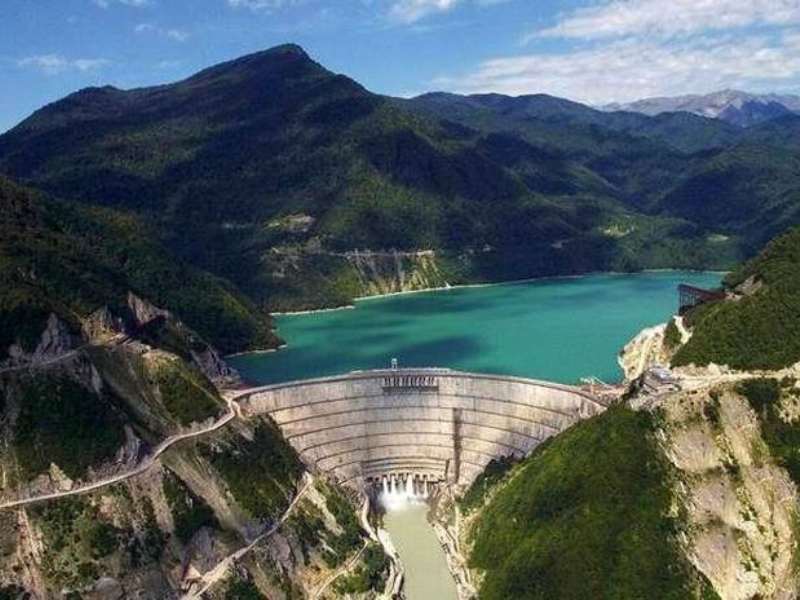
Svan people, their culture, dwellings, and crafts. All of this could disappear to produce so-called “clean energy”. History of Svaneti and Khudoni hydropower plant.
When hearing about Hydroelectric energy most people recall the idea of sustainability, but is this completely true?
As one of the world’s top five countries in per-capita water resources, Georgia is one of the countries that invested more in hydroelectric, producing 80% of its electricity demand from hydropower plants.
The Big One: Enguri Dam
With 271.5 meters, the Enguri Dam is the 4th tallest concrete arch dam in the world (and therefore the biggest dam in Europe), having to bow only to Chinese monsters. With a nominal capacity of 1,320 MW and an average annual capacity is 3.8 TW/h, it supplied approximately 46% of the total electricity consumption in Georgia (as of 2007).
The history of this plant is long and winding, we just want to give a quick overview, this is not the main topic of the article.
History of Enguri Dam – the biggest dam in Georgia
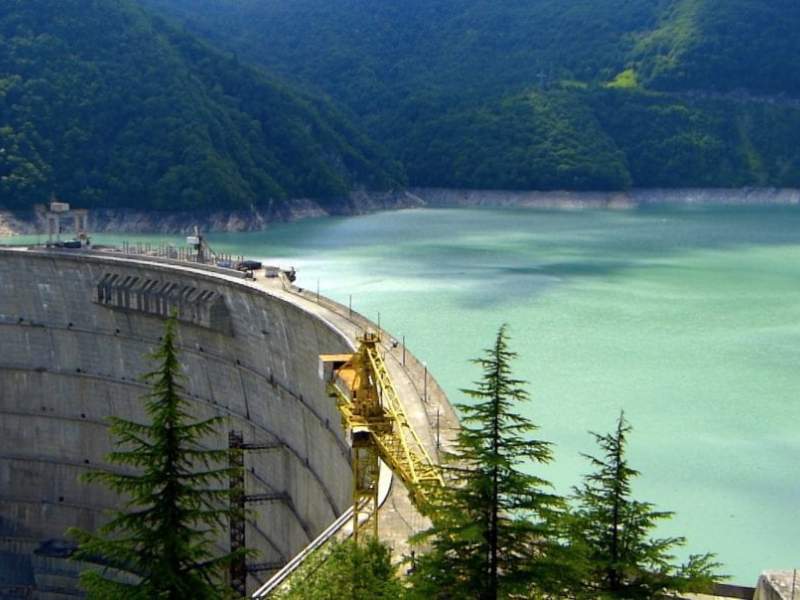
Conceived in 1961, under Nikita Khrushchev‘s government, was completed in 1987, just in time to see the soviet empire fall. After the end of the 1992/1993 Abkhazian/Georgian conflict, the forces of both sides found themselves facing each other on the two sides of the Enguri River and realized how this powerful generator could be useless without both sides working together. Inextricably linked to other unsettled issues in the peace process, the ownership of the complex is still undecided.
But let’s come to the main topic of this article, let’s talk about the future.
The Georgian government is presently promoting two very big hydroelectric projects, here we’ll focus on one of these.
What’s next: Khudoni Hydro Power Plant project
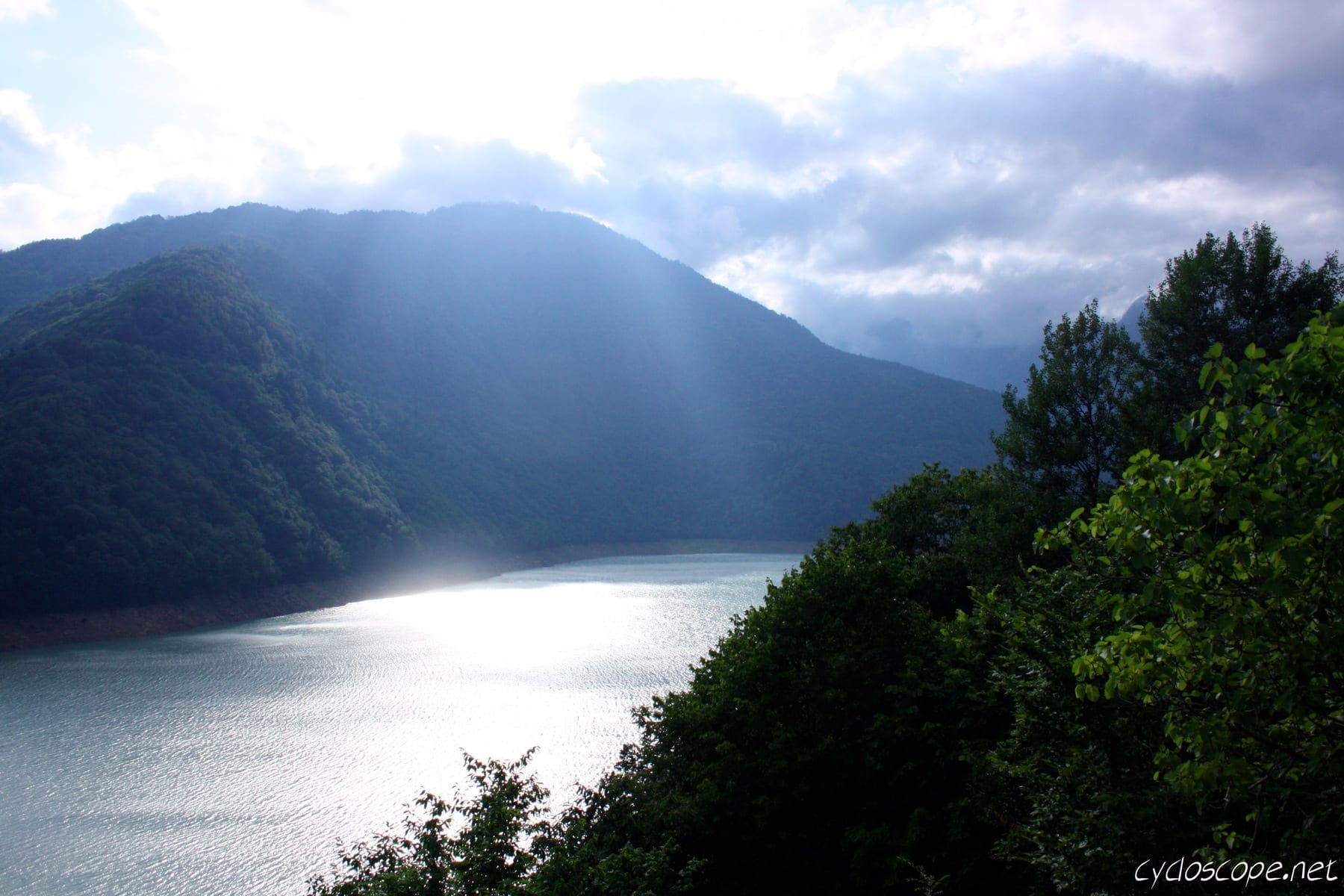
The Khudoni HPP is another project for the Enguri cascade system which is the complex that includes the Enguri HPP and the smaller Vardnili I, II, III, and IV (340MW in total).
The project envisages the construction of a 200-meter-high concrete arch dam, located approximately 34 km upstream from the Enguri dam.
The plan is for Khudoni HPP to have an installed capacity of 700 MW with a 1.5 billion kw output, it will be furthermore complemented by a number of other upstream hydropower plants also on the River Enguri (Tobari Hydropower, installed capacity of 600 MW, projected generation 2,2 billion kWh, Cascade of Nenskra hydros – 300 MW).
According to government calculations, the construction of the Khudoni HPP would increase the country’s electricity generation by 20 percent, it will cost 1.2 billion USD and will last 5-6 years.
This looks like a very impressive project that could produce literally tons of clean energy, but is this energy really clean? What’s the price and who’s going to pay?
Consequences of the Khudoni Project
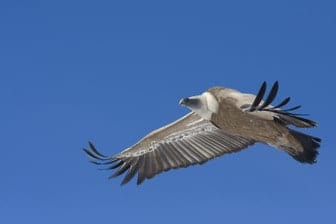
Let’s consider a few things:
The Khudoni project is not a brand-new idea. It was blocked by NGOs in the early 1990s, between these a big role was played by Green Alternative.
Ecological consequences and impact on wildlife
According to this really serious and experienced association the Khudoni project:
“was shown to be a construction that contains extreme risks for ecological disaster. The Khudoni HPP would intensify the devastation of forests and wildlife habitat, the loss of river species populations and the degradation of upstream catchments areas, owing to the flooding of the reservoir area in one of the most amazing highland regions of Georgia.
The upper part of the River Enguri basin combines sub-alpine forests and meadows, rocks and alpine tundra. The area is well known for its endemic wildlife. This includes different forest bird species, a community of large raptors (golden eagle, griffon vulture and lammergeyer), and endemic birds including the Caucasian black grouse, the Caucasian snowcock and the Caucasian chiffchaff. Mountain goats, chamois, brown bear, wolf, lynx, roe deer, and wild boar are quite common.
The cumulative impact of the Khudoni, Enguri and Tobari hydroes will adversely affect water quality, natural flooding and species composition in the river”.
Impact on local population and cultural heritage
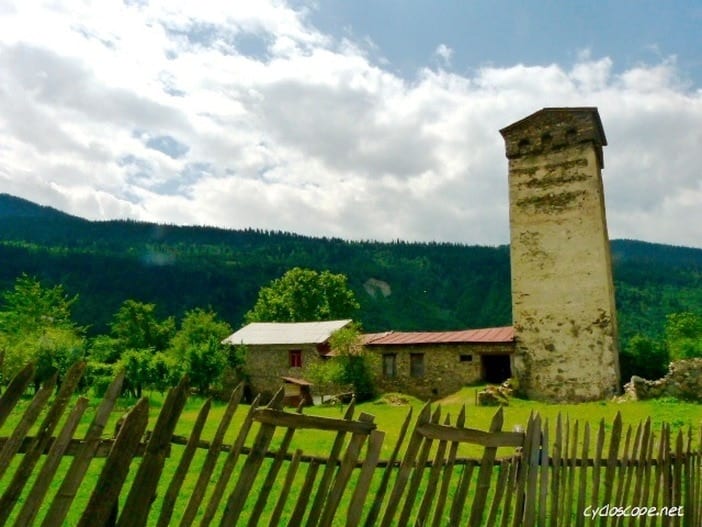
As this is not enough the project “requires the resettlement of a number of unique villages (including Khaishi);
the Khudoni HPP site is located in Zemo Svaneti (Upper Svaneti), an area of unique beauty.
Preserved by its long isolation, the Upper Svaneti region of the Caucasus is an exceptional example of mountain scenery with medieval-type villages and tower houses. The village of Khaishi still has more than 200 of its renowned and highly unusual houses, which were used both as dwellings and as defense posts against invaders who plagued the region in medieval times and before.
Resettlement issues and land ownership
The Zemo Svaneti region has been a UNESCO World Heritage Site area since 1996. According to the magazine Tabula.ge, the number of villages to flood is 14, homelands of 769 persons, 524 Hectares of land, while in a World Bank preliminary study, the people to be resettled are more than 1600.
The process of resettlement is linked to yet another problem, the controversy over land ownership. The state previously registered lands that did not officially belong to anyone as state property and subsequently transferred more than 1500 hectares of land (including agricultural, estate, forests roads, infrastructure, etc) to the investor for a symbolic 1 USD.
According to Tabula “Upon reaching an agreement with the government of Georgia, Trans Electrica decided to return those lands to the population – first helping locals to register them, at the company’s own cost, and only then commencing with the buyout of the land. To this end, the company hired a Canadian company, rePlan.”
But in the present day, these are all good intentions proclaimed.
Svan People
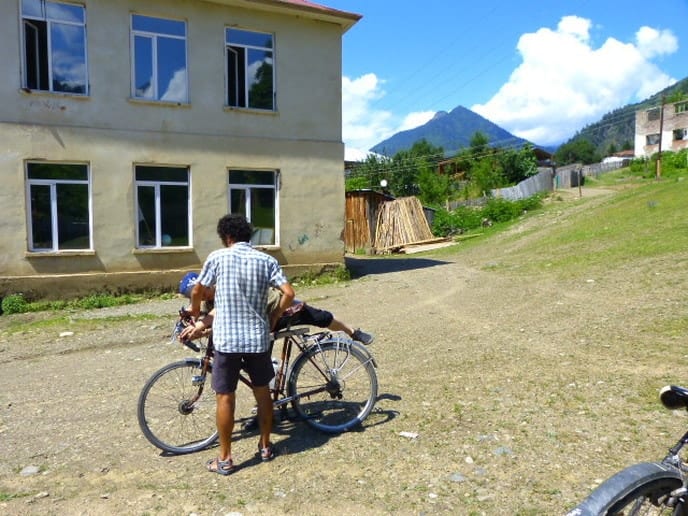
But who are these 769 or 1600 persons?
Svaneti or Svanetia (Suania in ancient sources) is a historic province in Georgia, in the northwestern part of the country. It is inhabited by the Svans, an ethnic subgroup of the Georgians. The self-designation of the Svan is Mushüan.
The Svans are usually identified with the Sanni mentioned by Greek geographer Strabo. Archeological, toponymic, and linguistic evidence indicates that the ancestors of the Georgian people have inhabited the west-central part of the southern Caucasus region for at least 5000 years, and probably much longer.
In the third millennium BC, one group of Kartvelians migrated to the northwest, reaching the east coast of the Black Sea. Place names believed to be of Svanetian origin are found in this area. Somewhat later, these ancestors of the Svans moved upland into what is now Svaneti.
Axes and other artifacts dating to the early Bronze Era have been discovered in Svaneti, as well as the ruins of foundries for the production of bronze and iron. This indicates that the local population was engaged in metalworking in the 2nd and 1st millennia BC.
Svan military mightiness
Strabo (end of 1st century BC) describes the Svans as a fierce, warlike mountain people, ruled by a king and a council of 300 elders, and capable of fielding an army of 200,000. (This figure may represent an exaggeration, or perhaps Strabo was including other Kartvelians under the designation “Svan”).
Beginning in the mid-13th century, wave upon wave of Mongol, Persian, and Turkish armies devastated the lowland parts of Georgia.
Because of its remote location much of Svaneti was never invaded. For this reason, many of the finest works of Georgian artistry — icons, illuminated manuscripts, and gold and silver items — were preserved in Svanetian churches during this time. The Svan villagers protected these treasures zealously (the theft of an icon was punishable by death, usually by stoning, even in recent times).
A sizeable number of objets d’art of foreign origin (Persian, Syrian, Italian, German) have also found their way into Svaneti, a testament to the wide-ranging cultural and trade contacts of medieval Georgia.
Svan religion
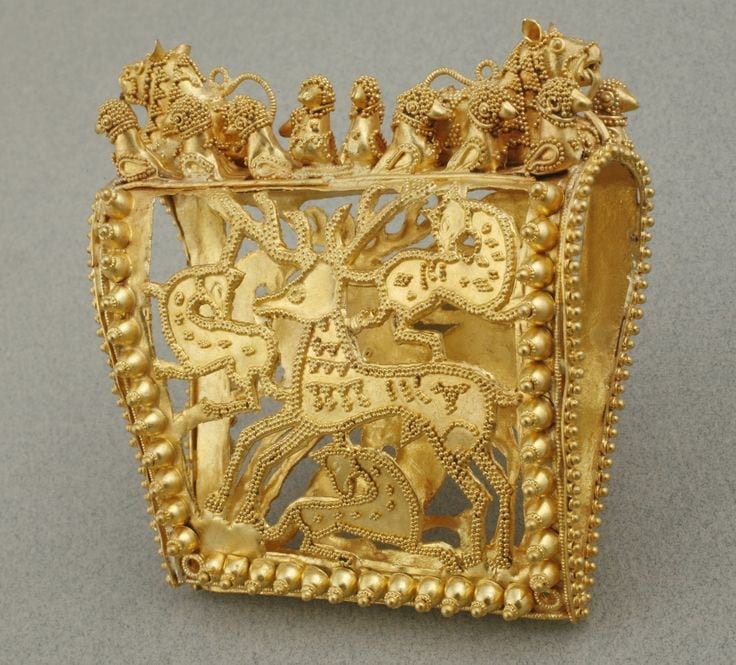
Svans have also their own religion, based upon an indigenous system, similar in many respects to those of other Caucasian tribes, which has been influenced by long and intensive contact with Mazdaism (presumably through the Ossetians) and Orthodox Christianity.
The chief Svan deities are Xosha ghêrbet ‘great god,’ Jg∂ræg ‘St George’ the chief protector of humanity, and Târingzel ‘archangel’. Important female figures include Barbal ‘StBarbara’ a fertility deity and healer of illnesses; Dæl, goddess of the hunt and protector of wildlife in the high mountains; and Lamæria ‘St Mary’, protector of women. Christ (Krisde or Matsxwær ‘savior’) presides over the world of the dead.
Crafts of Svan people
Svan artisans were especially renowned for their skill at producing finely detailed gold and silver icons, crosses, and drinking vessels.
It has been estimated that as much as one-fifth of the medieval Georgian metalwork that has been preserved to the present day is of Svan origin.
There was also a distinctive local school of icon and fresco painting. Svan folk literature comprises a variety of genres: epics, ritual and lyric poetry, tales, myths, and fables.
Svan Music
Among the folk arts, special mention should be made of Svanetian music. A tradition of polyphonic a-cappella singing has evolved in Svaneti, as in other parts of Georgia.
One distinctive feature of the music of this province is its greater use of dissonant intervals and striking harmonic progressions. These choral songs accompany certain religious rites and festivals. Songs accompanied by the chæng (harp) or the ch’unir (a three-string violin) are also frequently heard in Svaneti.
Anatomy of a Svan settlement
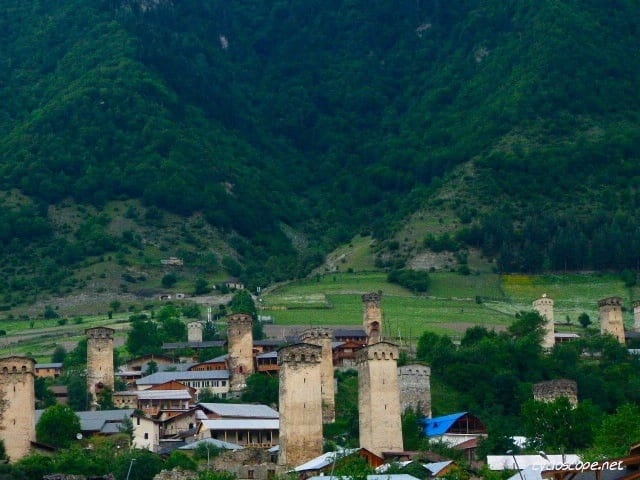
The traditional Svan settlements are especially well preserved in Upper Svaneti, where Khaishi is one of the most important villages, considered the Svanetian “door”.
The qew (or commune) comprises a group of hamlets, each inhabited by one or more clans. Within the hamlet are a few dozen homesteads, closely packed together, surrounded by farmland.
In the type believed to be most ancient, the family and livestock live under one roof in a fortress-like three-story stone structure. More often there is a separate, adjoining defense tower (murq’wam) where the family and cattle take shelter in case of attack.
After the tragic winter of 1986-7, during which several villages in Upper Svaneti were destroyed by avalanches, many Svans were resettled in the Marneuli region to the south of Tbilisi, losing contact with their root territory presenting them with serious challenges to maintain their existing forms of cultural expression.
Avalanches and landslides are in fact another big risk for the Svaneti region, a risk that will increase with the construction of the dam, due to flooding and related deforestation.
But will this at least give people cheaper energy?
What will people get in return

According to Green Alternative:
“The Khudoni dam will increase the electricity tariff due to the huge investment in the energy sector, while the people living near to the Enguri Hydro, Georgia’s largest hydro project producing 40% of Georgia’s electricity consumption, still experience problems with access to energy.
According to a leaked World Bank document, the basic costs of the project would be at least USD 780 million, while the production tariff would be 5.84 US cents per kw (against the 0.7 cents of the Enguri energy), and the economic return would be only 5%.
High electricity tariffs are already unaffordable for the majority of the Georgian population; more than 50% of the population is living under the poverty line, while extreme poverty affects 17.4% of the population (according to World Bank data).
The construction of Khudoni would significantly increase electricity tariff thus harm the livelihoods of the majority of people.”
Project supporters ‘ arguments are well expressed by Tabula.ge:
The company that has been planning to construct the Khudoni HPP since 2011 is Trans Electrica. The total amount of investments the company will make currently stands at 1.2 billion USD. Since 2011 the company has been paying property tax, with the budget of Svaneti having received 600,000 USD annually for the third consecutive year now.
The taxes to be paid by the company will significantly increase after the hydropower plant has become operative.
During the operation of the Khudoni HPP, the company will pay 20 million GEL in the form of annual profit tax; an income tax worth 20 million GEL will also be paid during the construction of the plant and an additional 4.5 million GEL after the completion of the construction when some 350 people start working on the plant, each receiving an average salary of 1,700-1,800 GEL.
For the use of the power transmission line to carry its electricity towards Turkey, the company will pay 19 million GEL. The trade deficit will go down by 8 percent annually, whilst the country’s Gross Domestic Product will increase by 1.1%.”
According to Green Alternative, these numbers aren’t realistic.
But Khudoni HPP is not the only big hydroelectric project that the Georgian government is carrying on. The construction of another big hydropower plant is envisaged in the Deriali gorge, on the Tergi River. This project will be treated in the upcoming second part of this article.
All sources are linked in the article


